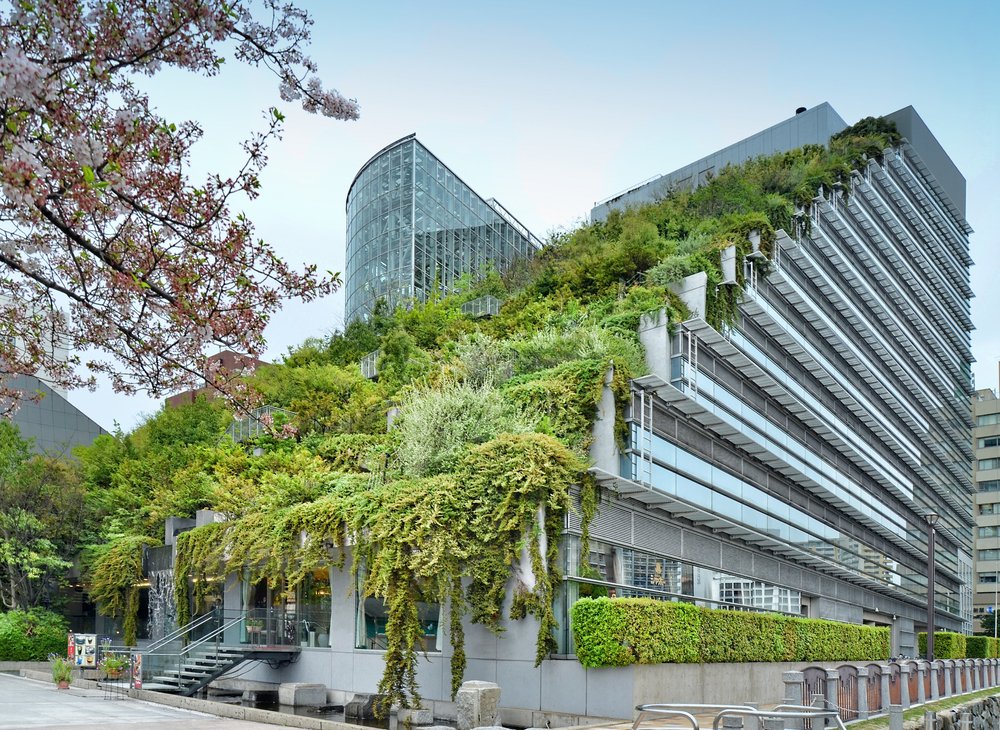New European Proposal for Energy Performance of Buildings Is a Missed Opportunity for Nature and Well-Being
Advertisement
The findings of a recent survey carried out by Eurobarometer - the polling instrument used by the European Institutions to monitor public opinion in Europe on issues and attitudes on subjects of political or social nature – say it all.
Nearly nine in ten Europeans (87%) think that tackling climate change and environmental issues should be a priority to improve public health. This is great news. The worrying news is however that three quarters of Europeans (75%) think that their national government is not doing enough to tackle climate change. This is a clear message to decision makers and an urgent call to action.
ACROS Fukuoka Prefectural International Hall at Tenjin Central Park, Fukuoka, Japan, 04-06-2015.
The proposal for revision of the EU Energy Performance of Buildings Directive (EPBD) was an opportunity for policy makers to prove the opposite. Unfortunately the European Commission’s proposal, published on December 15, whilst encouraging for energy renovations and decarbonization, felt half-hearted. An EU-wide building renovation programme for the next decade is surely an opportunity to green the built environment, yet there seems to be no space to require the integration of green infrastructure for new zero emission buildings and renovation projects. What a missed opportunity to make urban areas more energy performant, beautiful, inclusive and biodiverse. European Commission President, Ursula von der Leyen, at the launch of the new European Bauhaus movement, promised that new Bauhaus is “about hope. It is about inspiration. It is about new perspectives. And it's about concrete actions against climate change”. But where is this vision in the EPBD?
Where were the inputs provided by the Renovation Wave strategy published last November 2020 and the recommendations of the European Parliament on the same strategy? How could the European Commission so spectacularly misalign such an important proposal with the European policies concerning urban biodiversity and climate adaptation?
With growing urbanisation and 70% of the world population projected to live in urban areas by 2050, greening our cities is a no brainer. It’s also a key driver for healthy lifestyles and social well-being. There is a growing body of scientific evidence that shows the important role played by Nature in personal well-being. Several psychological theories explain why regular contact with Nature heightens our sense of well-being through, for example, the restorative effect of the natural environment and its capacity to stimulate human emotional functioning and reduce stress. There is indeed evidence that contact with Nature can reduce pulse rates, reduce cortisol levels and improve concentration and immune function. For younger generations, repeated contact with Nature is associated with improvements in cognitive functions, memory, attention, creativity and performance at school.
A roof garden with flowers and even honey bees on an office building from the fifties in the center of Rotterdam.
The positive social impact and the role that green spaces play to enable social contacts is also relevant and increasingly supported by evidence. In particular, while all social groups have been found to benefit from green space, socio-economically deprived and disadvantaged groups appear to benefit more than average from greener living environments. In addition, easy access to green spaces, especially in urban areas, can help reduce socio-economic inequalities and support mental health. It is not surprising then that gardening programs have been used in US prison rehabilitation programmes with good results. Only 10% of the prisoners paroled after participating in such programs returned to prison within three years compared to average recidivism rate of nearly 65% over the same period.
Advertisement
The Ryerson Urban Farm, growing rooftop vegetables in Downtown Toronto, ON.
The link between green spaces and personal and community well-being should be looked at with much more attention by policy and political decision makers. The health and social impact of integrating vegetations in densely populated areas is tremendous and often surpasses initial costs and other economic considerations. Governments should listen to citizens because they can count on their backing to push through bold and transformative changes to greening the built environment.
Greener buildings, with vegetations on roofs and walls, have better energy performance. They require less energy for cooling and at district/city level reduce the energy consumption of urban wastewater treatment plants by retaining and detaining stormwater. It is also clear that in biosolar installations green roofs make photovoltaic systems more efficient, generating between 5 to 15% more power due to evapotranspiration which cools the panels.
I remain hopeful that we can still make positive changes to the EPBD. The European Commission’s proposal is only the first step of a long legislative process which will provide other opportunities for the European Parliament and Member States of the European Union to assess and amend the text before its adoption due by mid-2023.
In weeks ahead, we need to roll up our sleeves and work with the European Parliament to raise the bar, link all of green infrastructure multiple benefits and improve the Commission’s Directive, for the people and the environment.
Luigi Petito, 45, father of two, is an expert in European public affairs. He is based in Brussels, a cross-roads for international affairs and the European Institutions. In 2019 he was invited to establish and lead the European (EU) Chapter of the World Green Infrastructure Network. Since then, he follows EU policy and regulatory developments related to green infrastructure and advocates for a systematic integration of green infrastructure in urban areas.







